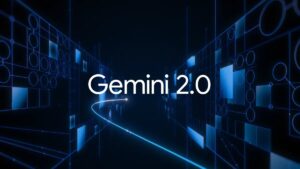Exploring Animal Communication: DeepMind Develops DolphinGemma to Investigate AI Interaction with Dolphins

Google DeepMind’s DolphinGemma: AI for Dolphin Communication
Introduction to DolphinGemma
Alphabet Inc.’s Google, through its DeepMind division, is making significant strides in marine science by focusing on dolphin communication. Recently, DeepMind unveiled its latest artificial intelligence model, DolphinGemma, which is tailored to analyze and generate sounds similar to those made by dolphins.
Development of DolphinGemma
The development of DolphinGemma involved a partnership with the Wild Dolphin Project (WDP), a nonprofit organization dedicated to studying Atlantic spotted dolphins in their natural environment. This cutting-edge AI system is built on Google’s open-source Gemma architecture and harnesses years of field recordings collected from dolphin behavior and vocalizations.
How DolphinGemma Works
DolphinGemma’s unique capabilities stem from its ability to produce sound sequences that closely resemble authentic dolphin communications. Here’s a closer look at how it functions:
- Data Utilization: The AI model is trained using a vast database of dolphin vocalizations collected over several decades. This extensive dataset is crucial for authentic sound generation.
- Mobile Compatibility: Google has designed DolphinGemma to operate efficiently on mobile devices, enabling seamless interactions in the field.
- Real-time Analysis: WDP plans to utilize the Pixel 9 smartphone to test DolphinGemma. This device will allow researchers to run AI models alongside audio-matching algorithms, facilitating the exploration of dolphin responses.
The Goal of DolphinGemma
The ultimate aim of DolphinGemma is to establish a system capable of generating artificial dolphin vocalizations and capturing the dolphins’ responses. This development may open doors to a new understanding of dolphin communication and potentially lead to two-way interactions between humans and dolphins.
Significance in Animal Communication Research
The introduction of DolphinGemma occurs amid a broader trend in AI research that seeks to interpret animal communication. For instance, recent studies have demonstrated that certain species, such as African savannah elephants and common marmoset monkeys, utilize distinct identifiers, resembling “names,” for their fellow animals. Additionally, machine learning continues to be applied in decoding the vocal patterns of various bird species, including crows.
However, experts in marine biology, like David Gruber, who founded the Cetacean Translation Initiative (CETI), emphasize that achieving a comprehensive animal communication system, akin to Google Translate for humans, is still a long way off. Contrary to human language, where definitions are well-established, animal communication lacks such a framework, making it challenging to decode meanings accurately.
Implications for Future Research
DolphinGemma represents a significant milestone in the exploration of dolphin communication. By employing advanced AI technology, researchers hope to enhance the understanding of how these intelligent creatures communicate with one another. The tech community and the scientific world alike are keenly observing the outcomes of this project, as it may reshape how we perceive and interact with marine wildlife.
Further Exploration
For those interested in the intersection of technology and wildlife conservation, DolphinGemma and similar projects highlight the transformative potential of AI in marine research. As these technologies evolve, they may provide important insights into the world of animal behavior and communication, ultimately promoting a deeper understanding and appreciation of our planet’s biodiversity.






